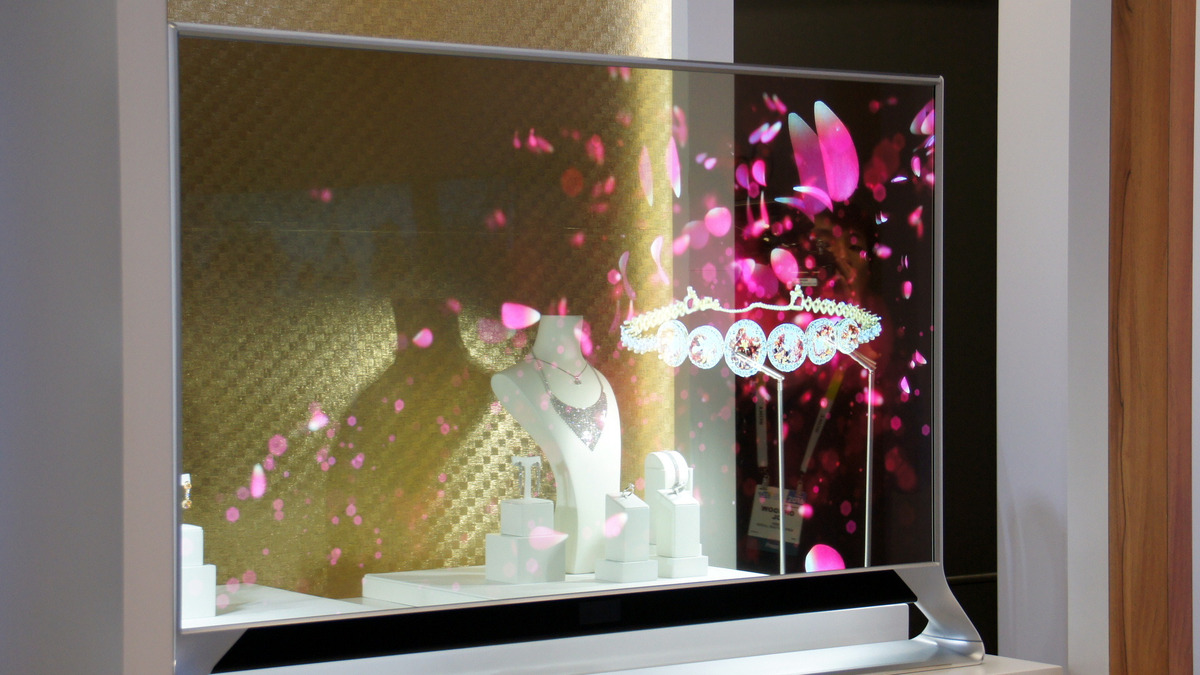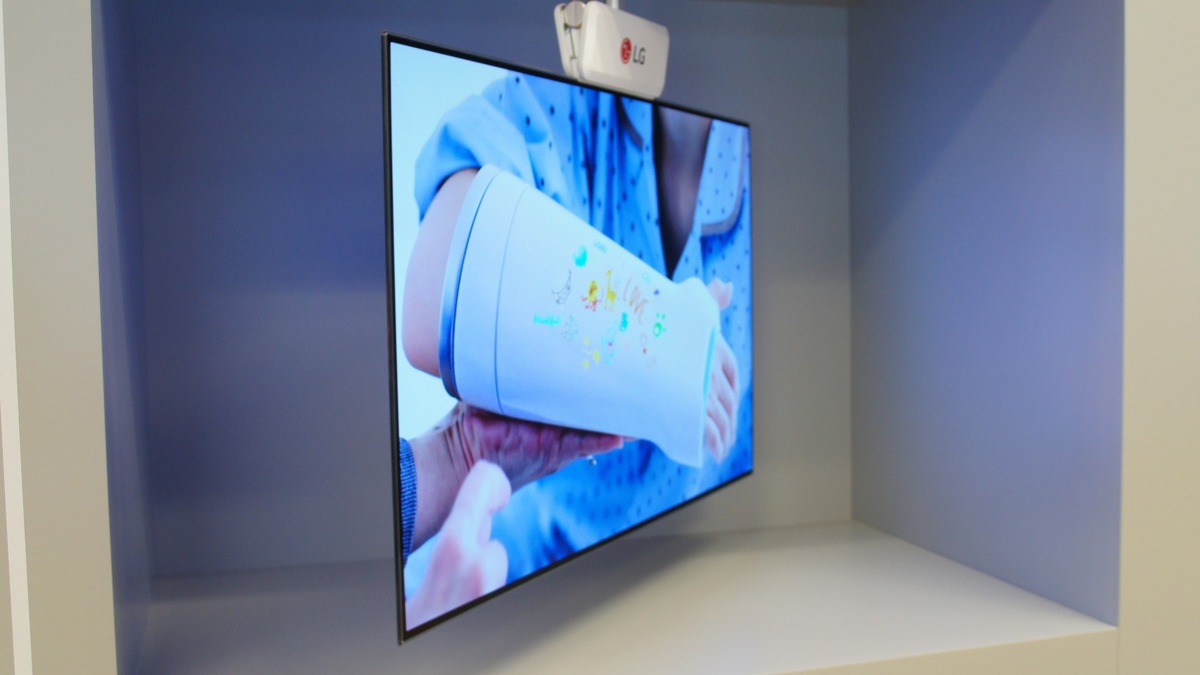
The future of displays is rollability. Not just flexibility, but the ability to roll up your TV and store it away until you want to watch TV again.
“Imagine enlarging that size to a TV, rolled up to 30 mm radius. So when you don’t need a TV you can roll it up and make it disappear. You won’t have this big black monster sitting in your living room all the time, covering up your wall paper,” said LG’s VP of OLED TV Sales KJ Kim as he explained the latest advances in OLED display technology.
This is more than just a pipe dream. At CES on Wednesday, LG showed a select group of journalists a rollable 18-inch, 1 mm-thick OLED display prototype. It played live video as they rolled and unrolled it repeatedly.
Behold: LG’s flexible, rollable 18 in. OLED display. #CES2016 pic.twitter.com/PMKkbkO9IL
— Lance Ulanoff (@LanceUlanoff) January 6, 2016
The ability to roll a display is intrinsic to OLED (Organic Light-Emitting Diode). Unlike LCD technology, which requires another layer for back-lighting, OLED emits light on its own. This means that if you remove the metal backing and glass cover, you can still view content on the OLED TV and then roll up the plastic display. LCD displays have a max flexibility of around a 400 mm curve (more of an arc). Right now, LG can only produce an 18-inch rollable display, but Kim foresees a future of rollable TVs that you can pick up and carry with you, as well as rollable touch-screen devices.
Is OLED practical
LG’s goal is to bring rollable, large-screen TVs to market within the next few years. In the meantime, LG is firmly committed to the technology, even as other competitors, like Samsung, have mostly left OLED behind.
The issues with it are myriad. It’s expensive to produce, materials are costly and the yields –- how many useable displays come off the production line –- are low. At least that was the story with OLED displays.
Kim admitted that OLED has had its challenges, but said, “The yield issue was one of our major issues in the beginning, but after more than three years in mass production our yield rate is very improved.” Production costs are still an issue, though, which is one of the reasons that OLED TVs remain mostly in the high-end of the market –- above $2,000 and beyond the reach of many cash-strapped consumer electronics buyers.
LG, however, continues to invest in the technology. Last year it added a new OLED production line and is working to manage the economic challenges of producing OLED displays. Kim says it’s worth it because of the benefits of OLED technology. Aside from flexibility, it offers perfect black, perfect viewing angles and perfect color (at least according to LG).
LG reported roughly 400,000 OLED displays shipped in 2015 and hopes to sell up to a million units in 2016.
A world of HDTV options


Image: Mashable, Lance Ulanoff
The double-sided display is actually two 1 mm OLED’s sandwiched together with a thin metal sheet between them. In total, it’s still just 4 mm, thick.
It all looked amazing, but I’ll still wait to buy until I can get the 65-inch rollable UHDTV.